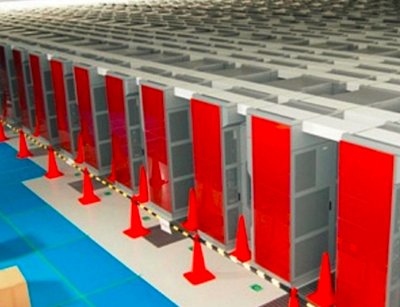The Australian National University has chosen a souped-up version of Fujitsu’s K computer – which was the world’s fastest supercomputer before distribution of the new TOP500 Supercomputing list this week – for its National Computational Infrastructure (NCI) Project.
IBM’s Sequoia, a BlueGene/Q system installed at the US Department of Energy Lawrence Livermore National Laboratory now holds the top spot with 16.32 petaflop/s, according to the high-performance computing list.
Fujitsu’s x86-cluster-type supercomputer, based on Fujitsu PRIMERGY servers, will provide a theoretical performance of 1.2 petaflops and have storage capacity of 12 petabytes. It will consist of 50 racks containing 3592 PRIMERGY CX250 compute notes with 7184 CPUs in 898 PRIMERGY CX400 chassis. Each rack will perform at 22.7 teraflops.
It will be placed in a new data center at the university in Canberra mid-December with handover expected early next year but Fujitsu will continue working with the university on its projects.
The university wants to use computational research to investigate weather, climate, disaster prevention and explore more advanced uses of supercomputing, according to ANU Vice-Chancellor Professor Ian Young.
“The new supercomputer will provide Australia with a much needed capability to meet national challenges,” Young said.
“It will take Australia’s research to new levels in areas such as weather and climate modelling, computational chemistry, particulate physics, astronomy, material science, microbiology, nanotechnology and photonics.”
Fujitsu CEO of Australia and New Zealand Mike Foster said once complete, the NCI Supercomputer is expected to the one of the largest and fastest computer in the world.

